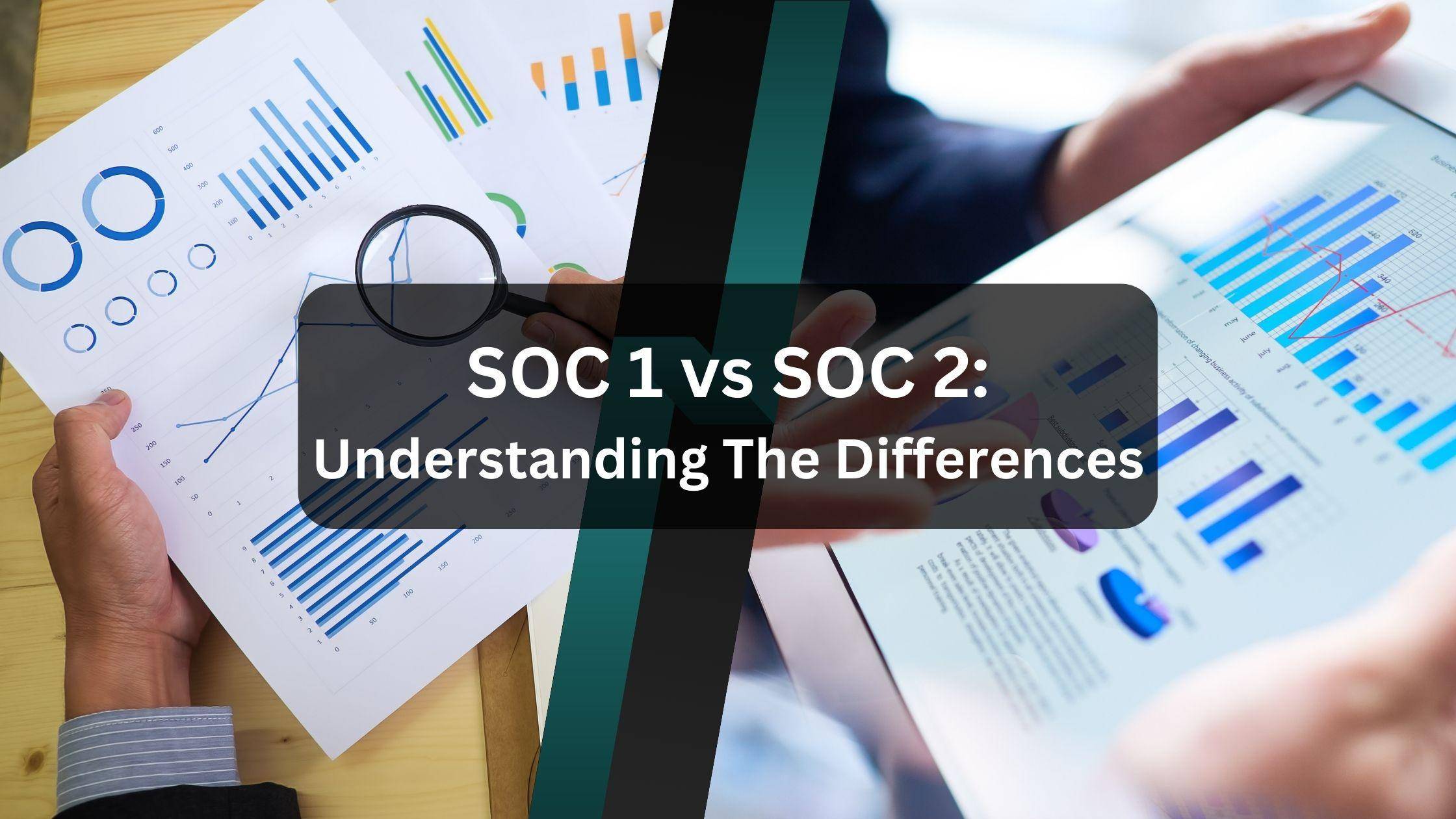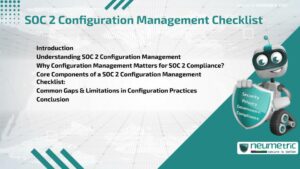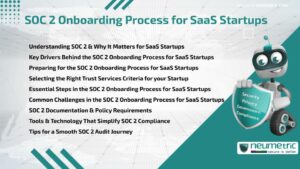Table of Contents
ToggleSOC 1 vs SOC 2: Understanding the main difference
Introduction
System and Organization Controls [SOC] is a Report that defines the internal controls that businesses need to maintain in order to ensure the reliability of their reporting. It was developed by the American Institute of Certified Public Accountants [AICPA]. While most companies utilise the SOC 1 Report, there are also other control frameworks available for those who meet specific criteria. In this article, we will explain what each framework entails and how they differ from one another.
What is SOC 1?
SOC 1 is a Report on the effectiveness of internal controls over financial reporting. It is intended to provide reasonable assurance regarding the reliability of financial reporting and the preparation of financial statements by Management. The report contains a conclusion in one of two forms:
- Management’s Assertion that the company has effective internal controls over financial reporting as defined by the Statement on Auditing Standards (SAS) No. 61; or
- An adverse opinion or disclaimer of opinion based on an auditor’s inability to obtain sufficient appropriate audit evidence about whether Management’s Assertion is true, due to limitations inherent in an audit.
What is SOC 2?
Service Organization Control 2 [SOC 2] is a Report for Service Organizations. It is a framework that provides information to users of financial statements about the quality of management, operational and control systems, and the corporation’s processes. The objective of SOC 2 is to provide users with enough information to allow them to assess whether the controls are operating effectively.
The standard consists of two parts:
- Controls Specification, which includes an overview of controls and procedures in place by an Organisation at a particular point in time;
- Reporting on Controls at a Specific Point in Time (SOC 2 Type 1 Report), which presents information describing the nature and operation of control activities during a specific period of time.
Major differences between System and Organization Controls 1 and Service Organization Control 2: SOC 1 vs SOC 2
There are some major differences between the two standards. Some of the differences include:
SOC 1 Reports focus on financial controls, while SOC 2 reports focus on information security.
SOC 1 reports are based on the requirements of NIST Special Publication 800-53, which focuses on financial controls. SOC 2 reports are based on ISO/IEC 27002:2005, which focuses more broadly on availability, security, processing integrity, confidentiality and privacy. In addition to reporting on these controls individually, SOC 2 reports also consider how they work together to form an effective Information Security Management System [ISMS].
SOC 1 is a more detailed standard than SOC 2.
SOC 1 reports generally include more information about the company’s controls and processes than SOC 2 reports do. Although both standards focus on the same core components, SOC 2 reports tend to be more concise and less detailed than SOC 1 reports.
SOC 2 has more criteria than SOC 1.
SOC 2 reports are often shorter than SOC 1 reports. This is because SOC 2 focuses on the core components of an Information Security Management System [ISMS], while SOC 1 has more criteria and focuses on additional areas that may not be as relevant to an Organisation’s information security efforts. SOC 2 is a broader standard than SOC 1. It includes criteria for how companies should manage their information security systems, but it does not focus on specific controls or processes.
What are Service Organization Control criteria
Although a SOC 1 has no set criteria, it does require the company to define control objectives that address the services being provided.
Service Organisation Control 2 [SOC 2] has defined the five Trust Service Criteria [TSC] from the AICPA. These 5 Criteria are Security, Availability, Processing integrity, Confidentiality and Privacy. The AICPA has defined these 5 Criteria as follows:
Security: The Organisation must have information security policies and procedures in place. It must also use technology to detect and prevent unauthorised access, malicious code and other threats. The security measures should be regularly evaluated and updated as necessary.
Availability: The Organisation must have systems in place to monitor the availability of its services and to detect failures. The Organisation should also have recovery plans that are tested periodically.
Processing integrity: The system must be designed so that it is tamper-resistant and cannot be modified by unauthorised users. It should also have tools for detecting malicious code or other threats.
Confidentiality: The system should use encryption and other tools to ensure that information is only accessible to authorised users. If encryption is not an option, the Organisation should implement other methods of ensuring confidentiality such as passwords or biometrics.
Privacy: The system should be designed so that no identifiable information can be gathered about individuals who use the system. This includes using anonymized data whenever possible, and ensuring that any information collected is stored in a secure way.
How to identify the right one for your business
How to identify what SOC Report should your Organisation aim for? It is important to note that there are no hard and fast rules for identifying whether a company requires either a SOC 1 Report or a SOC 2 Report. As such, this is something that should be considered by the board of directors in conjunction with their external auditors. It is also important to note that each Organisation will have different requirements, which means the best approach is to consult with your external auditor when deciding which report type would be most appropriate for your business.
A SOC 1 Report is a report that can be used by any Organisation regardless of the size, industry or number of users. A SOC 1 Report is an audit report designed to provide information on the effectiveness of controls over financial reporting and provides reasonable assurance that there are no material weaknesses in internal control over financial reporting. Businesses that are involved in performing services that could impact financial reporting for their Clients must be performing SOC 1 audits.
A SOC 2 Report is designed for Organisations that are too small to qualify for a SOC 1 Report. The report is also used by Organisations that do not have the same level of internal controls as larger companies. A SOC 2 Report provides a limited scope audit and provides reasonable assurance that there are no material weaknesses in internal control over financial reporting. A SOC 2 report does not provide an opinion on the effectiveness of internal control over financial reporting because there is not sufficient evidence to support such an opinion. Businesses that are involved in Information Technology like Data Centre, SaaS Vendors, and others must be performing SOC 2 Reports.
Conclusion
As you can see, there are many different types of audits that a company can have done. Each audit has its own benefits and limitations. Neumetric, a cyber security products and services Organisation, helps you obtain SOC 2 Report for your Organisation. We implement an Information Security Management System and help you become compliant with the Standard by implementing all necessary controls mandated for becoming SOC 2 Compliant.
We also conduct vulnerability assessments, penetration testing and risk assessments to help you identify weaknesses in your network and correct them. We can also help you implement training programs for your employees that will improve their security awareness and make them more aware of the importance of following best practices in cyber security.
FAQs:
What is the difference between SOC 1 and SOC 2 audits?
SOC 1 and SOC 2 are two different types of audits that focus on different aspects of your business. SOC 1 reports focus on financial controls, while SOC 2 reports focus more broadly on availability, security, processing integrity, confidentiality and privacy.
What is the difference between SOC 1 Type 1 and Type 2?
A Type 1 report provides a snapshot of controls and procedures in place at a moment in time, but does not include evidence that the business’s processes were effectively carried out over an extended period. In contrast, a Type 2 report covers end-to-end processes over time, evidence they are running smoothly.
What is the difference between SOC 1 Type 2 and SOC 2 Type 2?
A SOC 1 Type 2 report is an internal controls report specifically intended to meet the needs of the Customers’ management and their auditors, as they evaluate the effect of an Organisation’s controls on their own internal controls for financial reporting.
A SOC 2 Type 2 report is an internal controls report that a company uses to safeguard customer data and determine how well those controls are operating. Companies that use cloud service providers use these reports—which assess and address risks associated with third party technology services—to make sure their own information isn’t compromised.
What is SOC 1 vs SOC 2 vs SOC 3?
SOC 1 is primarily focussed on financial audit, SOC 2 is a security and controls report that focuses on Information Security and a SOC 3 report is similar to a SOC 2 report that is drafted to be presented to a general audience.





